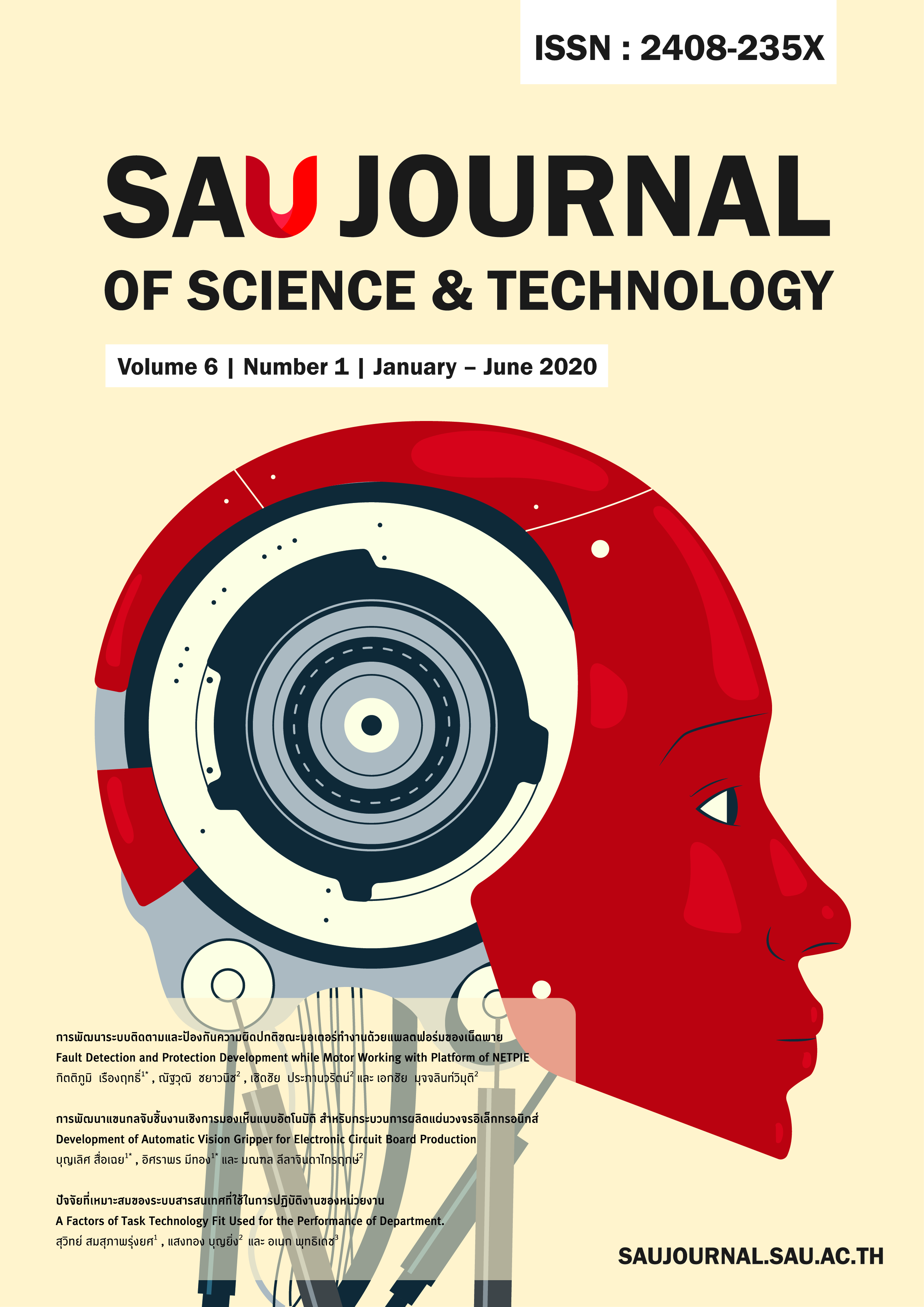A Factors of Task Technology Fit Used for the Performance of Department.
Main Article Content
Abstract
The purpose of this research was to analyze the appropriate factors of the information system used in the operation of the department. And to check the consistency of the appropriateness model of the information system used in the operation of the department.The sample group is the users of information systems of the Faculty of Business and Information Technology, Rajamangala University of Technology Suvarnabhumi, Academic Year 2017, 300 people were selected by multi-stage random sampling. The tool used was a questionnaire for the appropriateness of the information system used in the operations of departments in the Faculty of Business and Information Technology. Basic statistical analysis by using statistical data analysis program and confirmed component analysis to check the structural validity of the model, the components, the appropriateness of the information system used in the operation of departments in the Faculty of Business and Information Technology. The results of the research revealed that the suitability of the information system used by the work units in the Faculty of Business and Information Technology consists of 8 components. The composition weight is between 0.43 to 0.88. Rankings can be ranked according to the composition weight. As follows: Systems Reliability, Production Timeliness, Relationship with Users, Ease of Use / Training, Authorization, Compatibility, Locate ability and Data Quality. The model of the information system used in the operation of the department was found to accord with empirical data. Goodness of fit indicators included a chi-square value of 17.59 with 11 degrees of freedom: p =0.092, RMSEA = 0.047, SRMR =0.018, GFI =0.98, AGFI =0.95, NFI = 0.99 and NFI = 0.99.
Article Details
References
N. Tarinee, “Factors affecting internal controls of accounting information systems under the government finance and fiscal administration of political support activities.” Journal of Business Administration. vol.4 no.1, pp. 76-91, 2015. (in Thai)
R.Theera, “Professionalism in organizing and managing education in the age of education reform.” LT Press Co., Ltd, 2007. (in Thai)
K. Charoonkiat, Y. Jumpee, T. Boonchana, W. Pornchai. “Factors affecting the efficiency of information technology management in schools.” Social Sciences Research And Academic Journal, vol.11, no.1, pp.1-12, 2016. (in Thai)
Rajamangala University of Technology Suvarnabhumi. (2019, Jun. 30).[Online] “Personal”. Available: http://www.rmutsb.ac.th (in Thai)
D.L. Goodhue, R.L. Thompson. “Task-technology fit and individual performance.” MIS quarterly, pp.213-236, 1995.
Faculty of Business Administration and Information Technology, (2019, Jun. 30). [Online].Available: http://ba2it.rmutsb.ac.th (in Thai)
T. Yamane, Statistics: An Introduction Analysis. Harper & Row, 1973.
J. F. Hair, W. C. Black, B. J.Babin, R. E. Anderson, R. L. Tatham, “Multivariate data analysis.” vol. 6, 2006.
H. A. DeVon, M. E. Block, P.Moyle-Wright, D.M. Ernst, S.J.Hayden, D.J.Lazzara, “A PsychometricToolbox for testingValidity and Reliability,” Journal of Nursing Scholarship, vol.39, no.2, pp. 155-164, 2006.
K.G. Jöreskog, D. Sörbom, “LISREL 7 (Computer Software).” Scientific Software International, 1988.
D.Hooper, J.Coughlan, M.R.Mullen. “Structural equation modelling: Guidelines for determining model fit.” Electronic journal of business research methods, vol.6, no.1, pp.53-60, 2008.
P.Bentley, Comparative Vertebrate Endocrinology. Cambridge University Press, 1998.
C. Danuvasin. (2019, Jun.30). [Online] “Disparity in data access”. Available: http://mba.nida.ac.th/cec/images/stories/cecpic/ magazine/02/13_digital_03%20case5.pdf.
(in Thai)
V. Venkatesh, “Determinants of perceived ease of use: Integrating control, intrinsic motivation, and emotion into the technology acceptance model.” Information Systems Research, vol.11, no.4, pp. 342-365, 2000.
C.Phescharoenrat, K.Keatruangkamala, Factors in the acceptance and the use of the new cloud computing-based Intranet system : a case study on Thai Beverage Public Company Limited. (No.1085444686). Thammasat University, Bangkok,(2011)
R. M Stair, G. W. Reynolds, Principles of Information Systems, 6th edition. Boston: Course Technology, 2001.
G. C. Moore, I. Benbasat, “Integrating diffusion of innovations and theory of reasoned action models to predict utilization of information technology by end-users.” In Diffusion and adoption of information technology, pp. 132-146, 1996.
A. Haug, J.S. Arlbjørn, A. Pedersen, “A classification model of ERP system data quality.” Industrial Management & Data Systems, vol.109, no.8, pp. 1053-1068, 2009.

